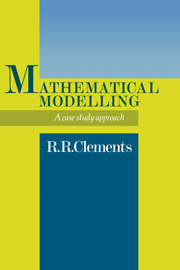2 - The background to mathematical modelling
Published online by Cambridge University Press: 05 February 2012
Summary
In chapter one it was suggested that a degree course in mathematics should seek to teach firstly a body of mathematical knowledge, secondly the ability to extend that knowledge independently and thirdly the ability to use that knowledge. It was also suggested that mathematics courses in tertiary education have traditionally concentrated on the first of these to the detriment of the other two. There is however, within the discipline of mathematical education today, an identifiable group of teachers and lecturers who, to a greater or lesser extent, believe that the teaching of mathematical modelling is vital to the development of an ability to use mathematics and that such teaching is necessarily a distinct activity from the teaching of other topics in mathematics. The existence of such a group, who might be characterised as the mathematical modelling movement, is a distinctively recent innovation in mathematics – it would have been difficult, for instance, to identify any such grouping prior to the mid nineteen sixties. We might ask what circumstances have led to the birth of the movement and why has its development been so rapid? In this chapter the origins of the movement will be described, the development of the theory of mathematical modelling traced and some new insights into the nature of the mathematical modelling process proposed.
The need to teach mathematical modelling
A panel discussion, organised in 1961 by the [American] Society for Industrial and Applied Mathematics, between Professors Carrier, Courant, Rosenbloom and Yang entitled ‘Applied mathematics: what is needed in research and education’ is reported by Greenberg (1962).
- Type
- Chapter
- Information
- Mathematical ModellingA Case Study Approach, pp. 6 - 23Publisher: Cambridge University PressPrint publication year: 1989



